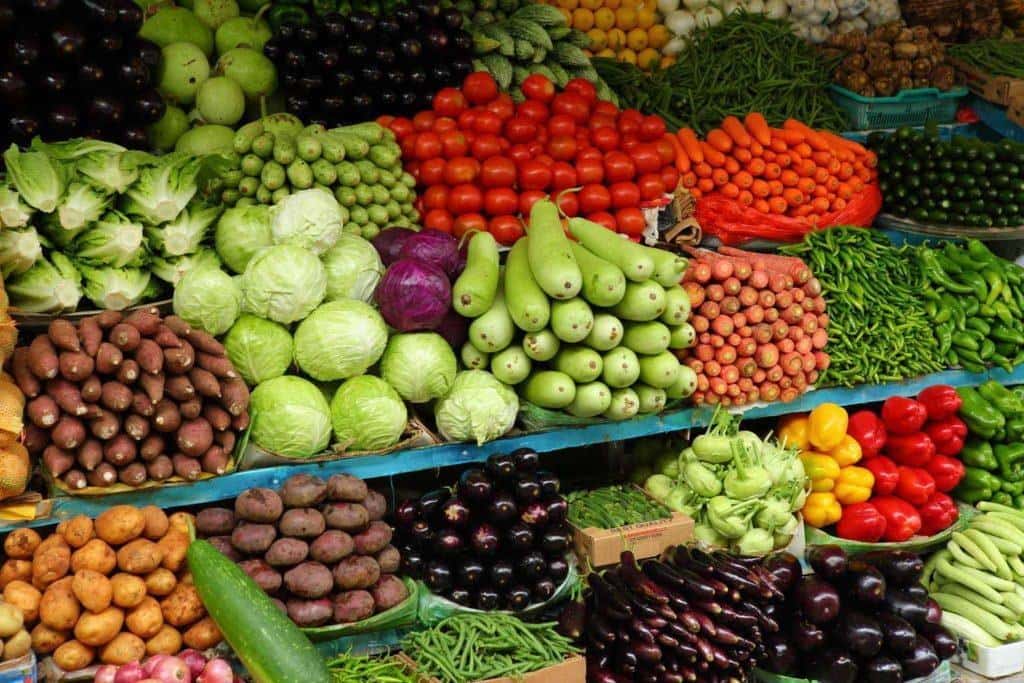Contents:
- Medical Video: Tips for parents of picky eaters
- Give a good example to children
- Benefits of fruits and vegetables
- Any number is better than nothing
- Encourage your child to eat more fruits and vegetables
- Invite your child to plan and prepare food
- Enjoy fruits and vegetables
- Food presentation
- Include fruits and vegetables in food as often as possible
- Snack advice
- Do not give up
- Healthy choice
- Other problems
- Important to remember
Medical Video: Tips for parents of picky eaters
Fruits and vegetables with a variety of colors and shapes are an important and fun part of your child's diet. Both contain nutrients that are important for the health, growth and development of children. If every day you get to eat and enjoy fruits and vegetables with your child, then usually they will imitate your habits.
Give a good example to children
Most babies eat fruit and vegetables as one of their first solid foods. After the first year, you may see your child more fussy about food because they can be more independent in choosing and enjoying food. This fussy attitude usually occurs when you offer fruit and vegetables. Parents may worry if their children lack food and vegetables from time to time, but this is not a big problem. There is no need to force children to eat more fruits and vegetables. The best way for parents is to enter fruits and vegetables as part of the daily menu for your entire family. This may take time, but this is how children learn to enjoy fruit and vegetables. So keep trying.
Benefits of fruits and vegetables
There are many benefits if you eat a variety of vegetables and fruits. Vegetables and fruits provide important vitamins such as vitamin C and folic acid. Fruits and vegetables also have other vegetable substances that are considered important to help reduce the risk of certain types of cancer and heart disease.
Any number is better than nothing
Everyone is encouraged to eat two fruits and five vegetables every day, but many children and adults do not apply this in their daily routine. Sometimes, children prefer high-fat 'tasty' snacks and high-sugar snacks instead. Do not give up quickly to offer vegetables or fruit to your child, even if he often leaves fruit and vegetables on his plate. Continue to offer your child a variety of fruits and vegetables every day and not just the kind they like. Children have small portion sizes and depend on their age, appetite, and activity. Remember the amount is better than nothing and always try to find a way to give more fruits and vegetables.
Encourage your child to eat more fruits and vegetables
If you follow healthy eating habits, your child may eventually follow the way you eat. Continue to offer fruits and vegetables in a variety of dishes, because children are more likely to eat what they are familiar with. Never assume your child does not like certain fruits or vegetables. When you offer but your child rejects it, maybe another day they decide to try it. Regular children's tastes change with age. The five steps to successfully giving your child fruits and vegetables are:
- Invite your child to plan and prepare food.
- Sample it to him and often eat fruit and vegetables in front of him.
- Serve fruit and vegetables with a presentation that is interesting and inviting appetite.
- Add fruit and vegetables to the menu as often as you can.
- Do not give up.
Invite your child to plan and prepare food
How to? Check out the following tips:
- Invite your child to shop at a supermarket or market to choose the fruits and vegetables they want.
- Let them see, smell and taste various kinds of fruits and vegetables when shopping together.
- Ask your child to describe the food and explain the food to you.
- Let your child help wash and prepare fruits and vegetables. Use this opportunity to explore new colors and shapes.
- Improve their skills by letting them make simple salads for themselves.
- Invite him to count grapes or other fruit and put them in a bowl.
- Plant some vegetables or herbs in the garden or pot. Let your child water and look after the plants.
Enjoy fruits and vegetables
How?
- Always remember to enjoy eating with your child if possible. If your child sees you eating and enjoying various kinds of fruits and vegetables, they tend to be more courageous to try it.
- Sometimes, a child may choose raw vegetables rather than cooked.
- A child can refuse new food if he eats with a stressful state, so try and focus on the fun things when eating together and avoid quarrels.
Food presentation
How good? Check out the following tips:
- Always have a bowl of fresh fruit ready to eat on the table. Store some vegetables like peas, tomatoes, carrots and mushrooms in the fridge for a quick snack.
- Serve vegetables and fruit as attractive as possible on your little plate. Serve fruits and vegetables of different colors, make cartoon shapes from the pieces, or provide the fruits and vegetables on a special plate.
- For children who are not fond of eating, try providing new fruits and vegetables once a week.
Include fruits and vegetables in food as often as possible
How?
- Serve vegetables and fruit in various ways, and add to most foods and snacks.
- Instead of looking for a new recipe, try to increase the variety or number of vegetables that can be added to your family's favorite recipes, such as pasta sauce, soup, or stir-fry.
Snack advice
Add vegetables and fruit in snacks. Try the ideas below for snacks:
- Poached corn stew
- Potato
- Pumpkin soup or vegetable soup
- Homemade fresh popcorn
- Cut vegetables with dipped sauce or yogurt
- Muffins or cakes made with fruit or vegetable fillings
- Frozen fruit or vegetables
- Fruit kebabs
- Boiled fruit
- Ice mixed fruit
- Canned fruit
- Fruit salad or a plate of fresh fruit slices
do not give up
Keep trying until your little one gets used to various kinds of fruits and vegetables. How:
- Children must have the opportunity to learn or sometimes try again to enjoy fruits and vegetables. Your role is to provide fruit and vegetables. Remember, your child may need to see fruit or vegetables 10 or more times before they are ready to try them.
- Always include small portions of vegetables on your child's plate. Invite them to try but let them decide whether they will eat the fruit or vegetable.
- Offer raw and crunchy vegetables before the main meal, when children are often very hungry.
- Try to avoid preparing alternative foods for your food. Your child can choose to leave certain foods, but will choose other foods offered if nothing else is provided.
Healthy choice
All vegetables and fruits are a healthy choice. Fruits and vegetables have a variety of colors, shapes and textures. Fruits and vegetables can be served fresh, frozen, canned or dried. Fruits and vegetables may be served raw, cooked, steamed, boiled, microwaved, sauteed or roasted. Variation is very important. Try to choose fruits and vegetables of different colors, especially orange, green and red. Some examples are melon, guava fruit, broccoli, spinach, green vegetables, tomatoes, carrots, and pumpkin. Sometimes, the price of vegetables and fruit can soar. To reduce costs, choose seasonal fruits and vegetables and use frozen or canned fruits and vegetables
Other problems
Other issues related to fruit and vegetables are:
- Packaged fruit juice is not recommended. It's better to eat fruit directly and a glass of water. Fruit juice can be a good source of some vitamins, but the disadvantage is that they contain high, low-fiber natural sugars. If you give fruit juice to your child's diet, limit this juice to one small cup per day.
- Potato chips are not the best way to eat potatoes because they are fried. These foods are high in fat and salt, and better only provided for special occasions.
- Fruit bars and fruit sweets contain very high sugar. Although these foods usually contain fruit, these foods are low in fiber and can stick to children's teeth, so they should be avoided. Children will enjoy fresh fruit or frozen fruit pieces if offered instead.
- Wash all fruits and vegetables. Research shows that the number of pesticides in fresh vegetables and fruit is very low and there is no reason to worry, even in very young children and nursing mothers. However, vegetables and fruit must always be washed before eating to reduce the risk of microbial contamination.
- Follow the season of fruits and vegetables. If vegetables and fruits that are out of season are more expensive, you can save money by using frozen or canned fruits and vegetables. This type of fruit and vegetable has the same vitamins and nutritional content as fresh products.
- Supervise children. To reduce the risk of choking, toddlers and children must always sit and be watched while eating all foods, including raw fruit slices, vegetables and all hard foods.
Important to remember
- Offer children a variety of fruits and vegetables every day.
- Various fruits and vegetables are better consumed in small portions but often, rather than consumed in large quantities but only occasionally.
- The portion size of children may be smaller and will depend on the level of age, appetite and activity.












